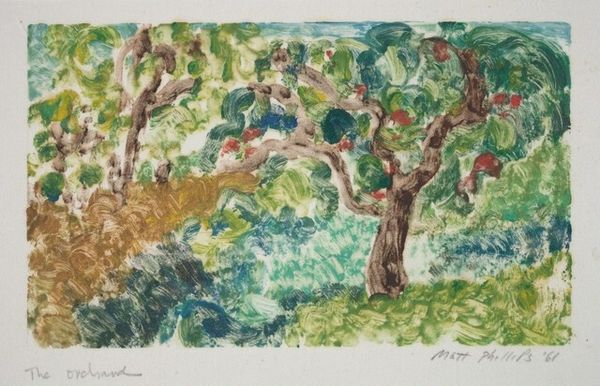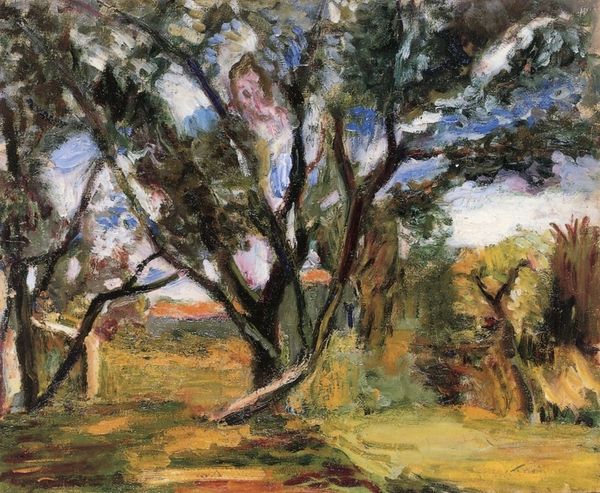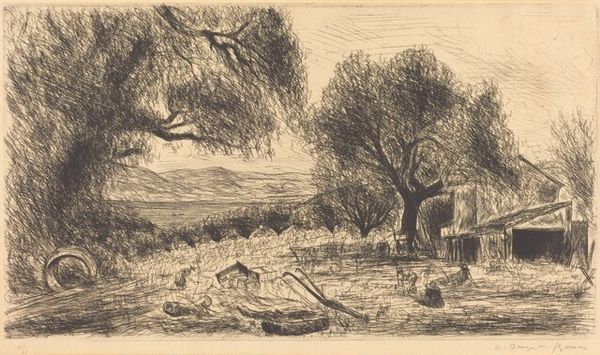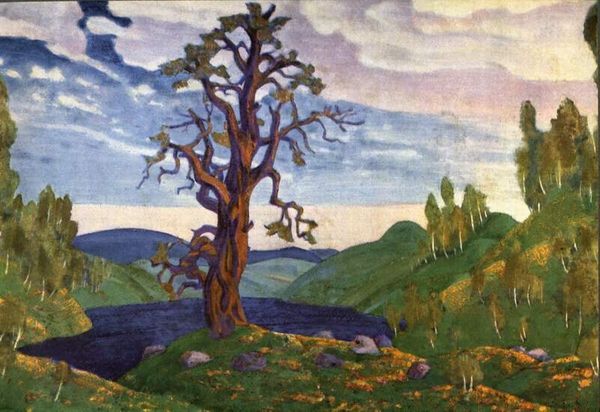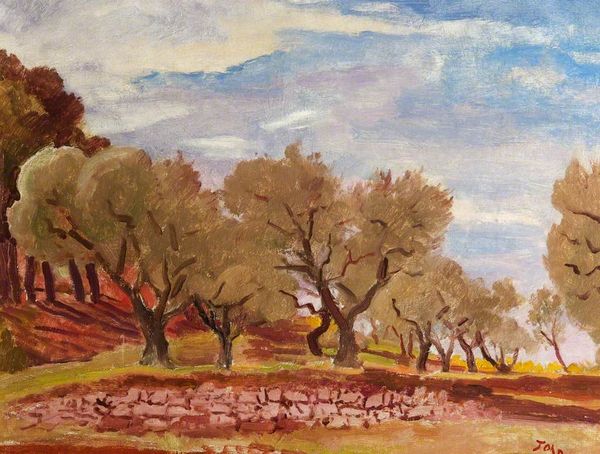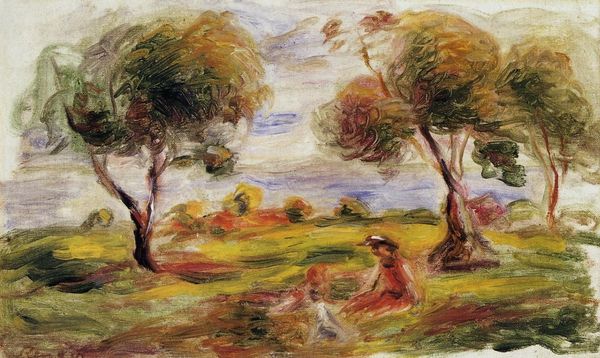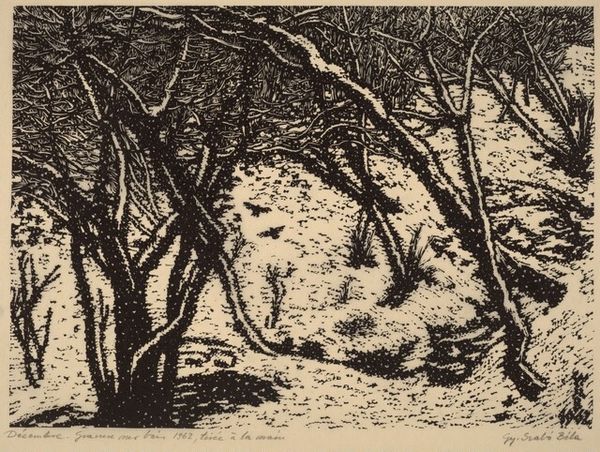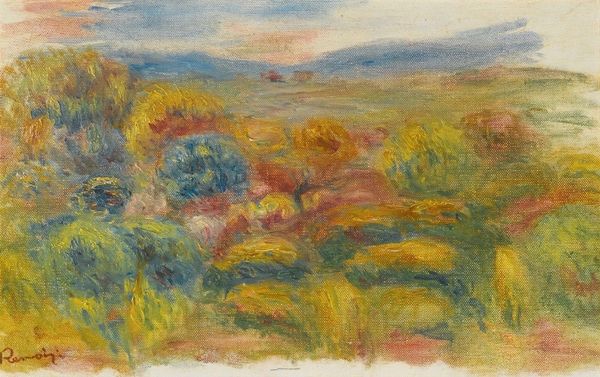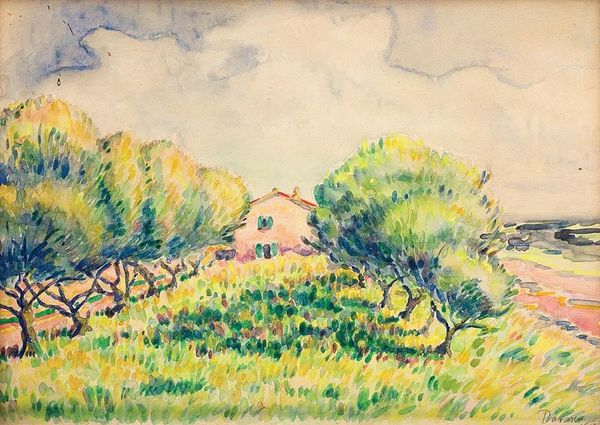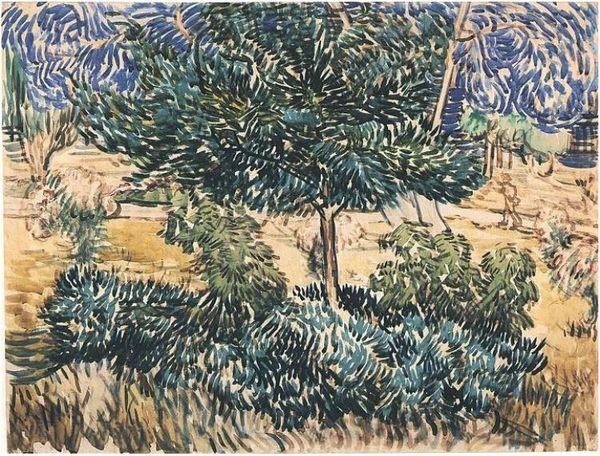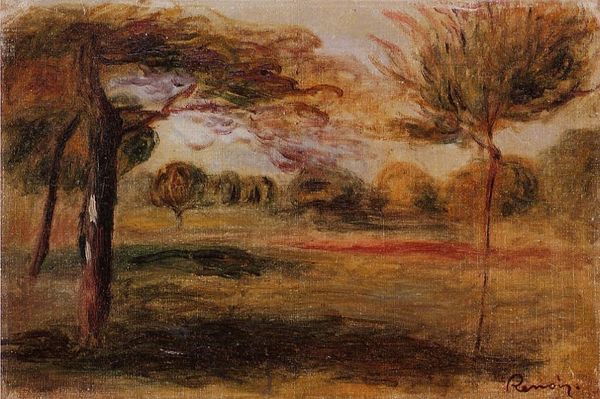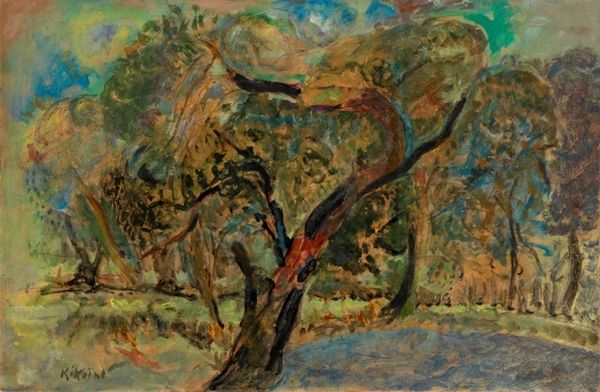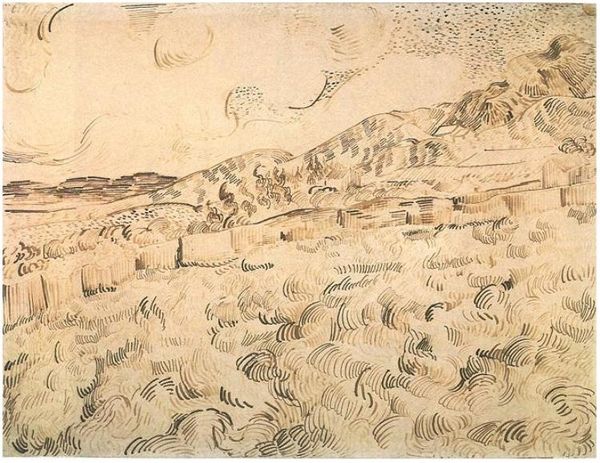
print, etching
# print
#
etching
#
landscape
#
line
#
realism
Copyright: National Gallery of Art: CC0 1.0
Curator: Let's discuss "After the Storm", an etching by Mortimer Borne. It showcases a landscape touched by recent tumult, presenting a scene that merges realism with a unique linear style. Editor: It has this wonderfully somber quality, doesn’t it? The etching technique, the color choices—it feels like the moment right after the loudest silence you've ever experienced. There's a strange feeling of hope tinged with devastation. Curator: That's interesting. From a historical point of view, landscape art like this was gaining prominence for representing both the beauty and the raw power of nature. The etching medium allowed for detailed depictions, but Borne employs this realism through his striking linear expression. You can observe this, especially, with the composition in the foreground, how the foliage is layered in sweeping linear marks. Editor: Yes, the trees look as though they have survived something intense. Considering art's engagement with social themes, this image subtly acknowledges nature's resilience in the face of the unyielding forces of progress that have continuously harmed the earth. I find that message quite timely. Curator: Landscape etches like "After the Storm," allowed for broad dissemination. Artists could reflect changing environmental realities but it often took a passive role, focusing instead on personal experiences within this larger context. This approach speaks volumes about the era's priorities and anxieties surrounding landscape representation in a rapidly changing society. Editor: Exactly. This makes me wonder who the solitary figure is in the distance. Is this figure assessing the storm's impact or reclaiming this altered landscape? The symbolism feels ambiguous and potent at the same time, suggesting both damage and renewal. This prompts essential questions of social accountability as well. Curator: It's certainly an open invitation to interpretation. By examining the art world's patronage networks, we may see how these images served both aesthetic and social functions—reifying romanticized notions of the pastoral, yet also, subtly hinting at environmental changes, like post-industrial landscapes. Editor: Thinking about Borne’s "After the Storm," it reminds us of the crucial intersection between art and advocacy. Art should continually spark essential dialogues about responsibility, repair, and social awareness. Curator: I agree. And Borne's etching offers an avenue into understanding the public role art had and the developing politics of environmental imagery in art from this period. Editor: It truly shows how the echoes of storms – whether environmental or social – resonate in art and activism alike.
Comments
No comments
Be the first to comment and join the conversation on the ultimate creative platform.
